The ASUS Z9PA-D8 is a dual socket Intel Xeon E5-2600 LGA2011 motherboard that packs a unique feature: a small form factor. The ASUS Z9PA-D8 utilizes ATX mounting points so it will fit in virtually any chassis one would want to use with the board. This is important because the LGA2011 socket is very large and configurations typically include 4-12 DIMM slots per CPU. On a dual Intel Xeon E5-2600 platform this requires a lot of physical space. Many vendors have responded by introducing a smaller narrow ILM cooling layout or simply using larger form factors such as EATX. In most server chassis, this works well, however some users require short depth mounting or have smaller enclosures. This ASUS Z9PA-D8 review takes a look at a motherboard focused on addressing those needs while cramming a ton of functionality into a small space.
Test Configuration
We use two Intel Xeon E5-2690 CPUs for testing dual LGA 2011 motherboards. The Intel Xeon E5-2690′s are flagship server processors. For testing, they can handle whatever we throw at the test platform.
- CPUs: 2x Intel Xeon E5-2690 CPUs
- Motherboard: ASUS Z9PA-D8
- Memory: 8x 16GB Samsung 1600MHz CL11 Registered ECC RDIMM
- SSD: Corsair Force3 120GB, OCZ Vertex 3 120GB 2x OCZ Agility 3 120GB
- Power Supply: Corsair AX850 850w 80 Plus Gold
- Chassis: Norco RPC-4220
- Operating System: Ubuntu 12.10 Server and Windows Server 2012
This is the typical test setup I have been using for my dual Xeon E5 reviews. My 8GB 1600MHz CL11 DIMMs are still on order but I do hope to update soon.
The ASUS z9PA-D8 Review
Potentially the biggest feature of the ASUS Z9PA-D8 is the form factor. The ASUS Z9PA-D8 is almost an ATX form factor motherboard. It measures 12”x10” with the mounting locations of a standard ATX (12”x9.6”) motherboard. What that practically means is that the motherboard will work in just about any chassis around including many short-depth rack mount chassis. As one can see from the overview, the ASUS Z9PA-D8 fits a lot of functionality in a small space. The board does extend a bit further in terms of depth, but the mounting points are the same.
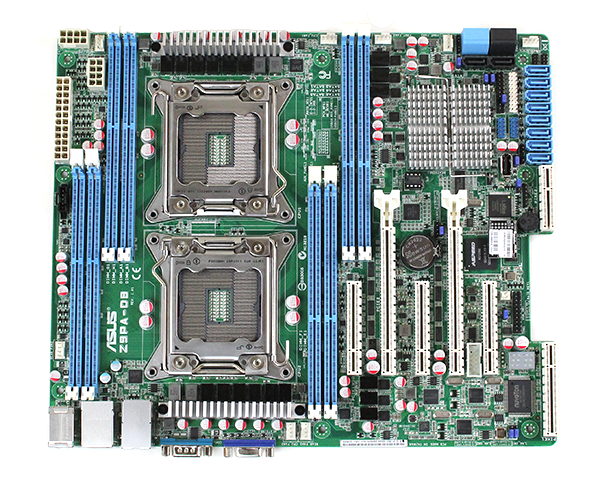
The CPU configuration on the ASUS Z9PA-D8 is in-line. What this practically means is that air will flow through both heatsinks in series. Generally with these configurations, 95w or less CPUs are recommended in a 1U chassis from an efficiency standpoint. Cooling two 135w CPUs in series is too much for many 1U chassis so something that must be taken into account when building a solution. Of course, there are plenty of 1U servers able to accommodate this configuration, one just needs to double-check before deploying.

To help with power consumption, the ASUS Z9PA-D8 has a multi-phase digital power solution to keep a wide range of CPUs and workloads running at peak efficiency. ASUS also includes its proprietary Digi+ EPU to maintain power inefficiency.
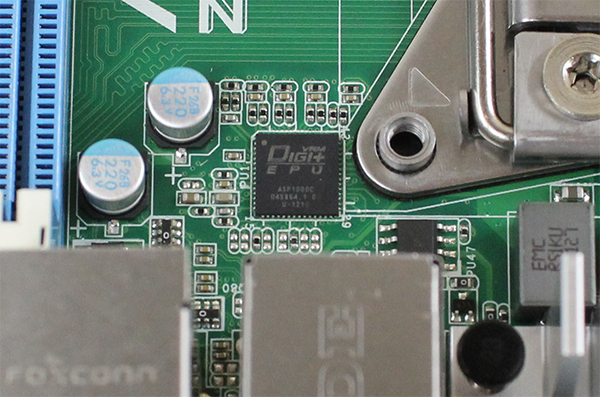
In order to fit into the ATX form factor, the ASUS Z9PA-D8 utilizes four DIMMs per CPU. Using LRDIMMs this translates into a maximum of 256GB of memory. Using standard 16GB registered ECC DDR3 RDIMMs the motherboard can support up to 128GB of memory. With the 16GB RDIMMs running about $140/ea that is fairly reasonable to attain for this class of system.
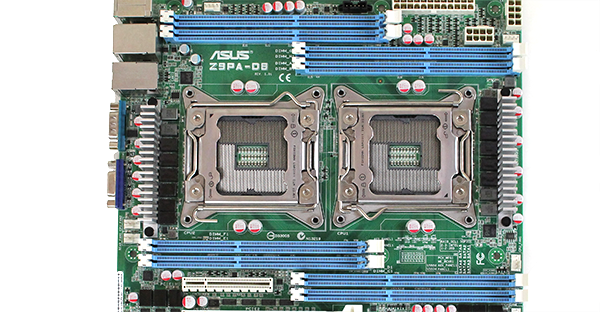
The ASUS Z9PA-D8 has a lot of PCIe expansion slots. There are two PCIe x8 and two PCIe x16 physical slots. These run at PCIe 3.0 speeds. If slots 4 and 6 are occupied, lanes are split from the x16 slots making the occupied pair x8 each. It should be noted that the top PCIe x8 slot does fall in line with two DIMM slots so the length of any card used there should be reviewed.
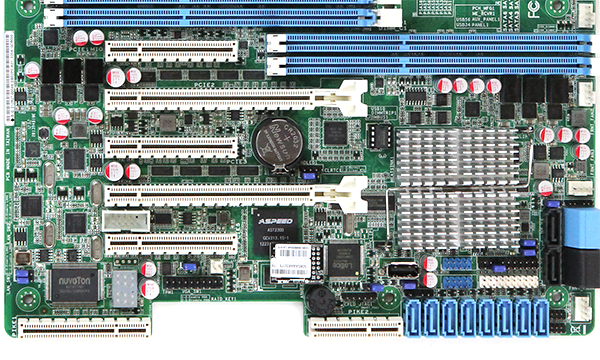
In terms of drive connectivity, the ASUS Z9PA-D8 utilizes the Intel C602-A chipset yielding 2x SATA III ports and 4x SATA II ports. Along with the Intel chipset, there is a PIKE slot on the ASUS Z9PA-D8. PIKE is ASUS’ proprietary RAID controller/ HBA form factor that allows one to use a variety of controller types all using the motherboard SATA/ SAS ports.
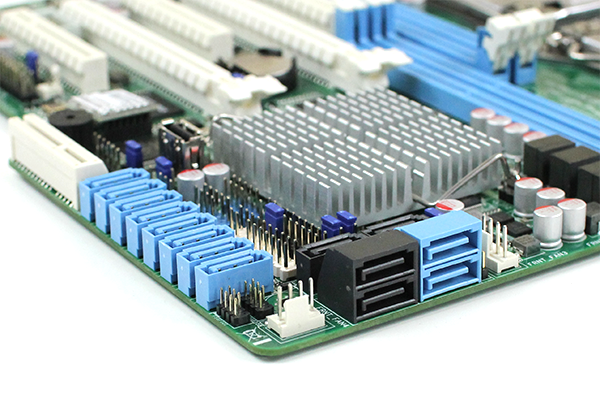
In addition to SATA connectivity, ASUS does offer an internal USB Type-A connector for flash drives that are deployed inside servers. A very common use case for this is running a NAS operating system or running a VMware ESXi hypervisor. ASUS also includes dual Intel 82574L LAN controllers onboard. These are visible next to the Nuvoton controller and the Realtek NIC.

In terms of rear panel I/O, the ASUS Z9PA-D8 has one of the more featured rear panels for a server motherboard. One somewhat unique feature of the ASUS Z9PA-D8 is the fact that it supports both USB 3.0 as well as a MIO-892 audio. Most server motherboards include two to four USB 2.0 ports. The addition of USB 3.0 means that the motherboard can utilize fast USB 3.0 flash and external storage.
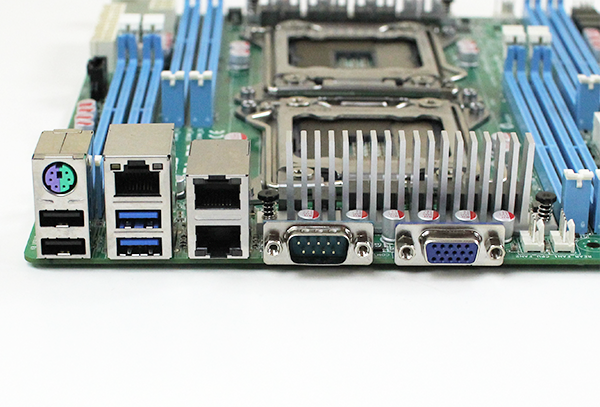
Along with the USB 2.0 and USB 3.0 ports, the ASUS Z9PA-D8 includes a standard VGA and serial console interface. It also has a combo PS/2 keyboard/ mouse port. Another feature are the three RJ-45 Ethernet ports. Two are controlled by the Intel 82574L controllers and the third can be used for out-of-band management.
Management Features
Our review ASUS Z9PA-D8 came with the ASMB6 iKVM module installed just above the ASPEED AST2300 controller. This is perhaps one of the most significant features of the motherboard.
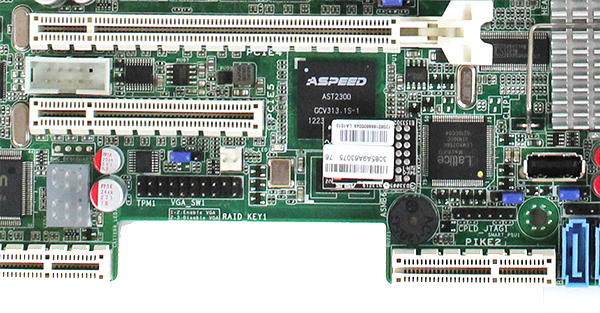
With the ASMB6 iKVM module installed, the ASUS Z9PA-D8 has access to IPMI 2.0 features. This means that one can monitor the health of a server. One can also reset the server or turn a server off remotely. One of the key features is the ability to remotely mount media (e.g. an installation CD) and use KVM-over-IP to setup or diagnose servers.
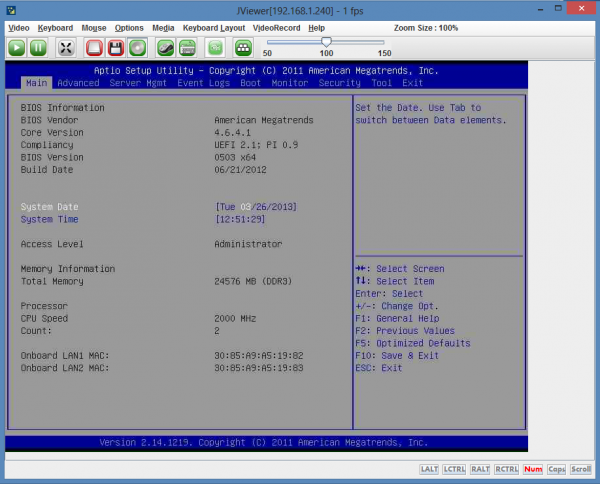
We recently did a deep-dive on the ASUS ASMB6 iKVM solution and it works very well. That is a great place to see all of the functionality afforded by the ASUS management platform. One management option that ASUS offers is ASWM Enterprise. Unfortunately we have not had an opportunity to use this yet, but look forward to in the future. Here is a quick video on ASWM Enterprise:
httpv://youtu.be/jD95EwSad7c
Conclusion
Comparing this board to a full EATX platform is somewhat non-sensical. ASUS is specifically targeting a much smaller form factor. Even with that, the ASUS Z9PA-D8 packs a lot of functionality into a 12″ x 10″ space. This is not an insignificant feat as many single socket LGA2011 motherboards with 8 DIMM slots barely fit in an ATX form factor, and that is without the second CPU. Overall setup was very easy and the platform was very stable during testing so nothing to report even after two months of deployment other than that the server motherboard works. Features such as USB 3.0 support are certainly forward thinking and show that ASUS is adding new innovative features to server platforms that traditionally have used USB 2.0 exclusively.




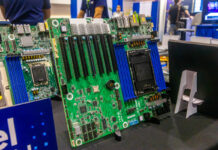
Hey Patrick, any chance you could check to see if this has SR-IOV support?
Nice looking board but too many basic features have been lost to make it ATX compliant. Most of the PCI-E has been lost out of the second CPU most likely, sharing lanes in slots is bloody lame tactic these days.
The insistance of ASUS to keep using their PIKE is getting frustrating as well, a simple choice of the 604 chipset would have seen the same connectivity without the need to spend big dollars on over-price proprietary hardware.
I didn’t realize that this is the motherboard that I have in my fileserver, an ASUS TS700-X7/PS4. The barebones system is a great value, has room for up to 8 hotswap drives inside, comes with the iKVM, and even comes with mounting holes for the LSI BBU to the chassis. Extremely low noise and easy to work inside. The board is very compatible, running CentOS 6.4 w/o a hitch.
I have recommended it to friends and would definitely consider the full system for a bit more than just the board if you need it.
Hi,
How is the power consumption in idle / load on that setup? I’m planing a build with that motherboard but with two E5-2620’s and would like too have some numbers if you have any?
What make and size CPU cooler would fit on this dual Xeon configuration ATX board
It’s a great board, but with so much on a standard ATX form PCB there’s not a whole lot of room for bulky CPU coolers if you’re going to have 2 CPUs. I put a Corsair Hydro Series H60 cooler on my single CPU which fit nicely and left plenty of open space. Two of these would work, or perhaps one H60 and one standard cooler.
will this memory work in this motherboard?
Samsung 8GB PC3-12800 DDR3-1600MHz ECC Registered CL11 240-Pin DIMM 1.35V Low Voltage Single Memory Module Mfr P/N M393B1G70BH0-YK0
seem like they have it approved but with a different speed:
Samsung M393B1G70BH0-CK0 8GB DDR3-1600 ECC/REG CL11 1 Samsung K4B4G0446B-HCK0 IDT SSTE 32882 KA1AKG
just wanted to make sure before purchasing this board.
thanks in advance for your answer
AL
who can tell me, can this MB support CrossfireX?
AL – I think those would work. A lot of the forum guys know better though.
Sean Chang – Don’t most Intel motherboards support CrossfireX at this point? The ASUS Z9PA-D8 WS does support CrossfireX up to I think quad GPU.
Thanks Franklin
It indeed worked.
actually used both YK0 and CK0 versions, which differ only in their needed voltage (wrote in my previous comment differ in freq. but what I meant was voltage, one at 1.35 and the other at 1.5V).
the ones running at 1.5 get a higher operational temp than the 1.35. but it is a few degrees difference.
if you keep a super cool box like mine (Fractal design define R4) with 4 X 140mm fans and 2X Corsair H60 liquid cooling for the CPUs, the temp for the memory sticks is around 38-43Celsius. have a set of 8X8GB which I purchased for 80$ a piece@ ITCREATIONS.
the only piece that runs the hottest in this box is ASUS PIKE 2008, although with a fan on the bottom and air running from the case cover, it gets a got airflow.
powered the box on a 650W Antec and it is running just fine, even during peak loads for hours (although a dual GC configuration, two Raids and other media present, not to mention a bitspower gadget for checking HDD activity and controlling fans speed, PCI audio, and PCI USB3)
purchased the board from newegg, @370$ but they occasionally give a 10% OFF on server boards, so save that 37$ extra. believe this board can go even cheaper in special occasions.
lets see how it will be in the long run while driving 4 monitors, and crunching number for the finance nonstop.
can this motherboard support crossfire or SLI?
has been asked before but not definitive answer.
just wanted to make sure before purchasing a pair of AMDs
Some good notes on the crossfire/sli support for this mobo which is built on X79 chip.
still have to try it myself as ASUS support team denied the support, and the following notes put in doubt the support for sli/crossfire.
If anyone has more info please share.
—————————————————————————————————————–
The first rumour to clear up is about the PCI-E controllers built into the Sandy Bridge E CPU and X79 chipset. Disappointingly, the former is PCI-E 2.0, not PCI-E 3.0 (which provides greater bandwidth) as had been hoped. Even so, because the controller has 40 PCI-E 2.0 lanes it’s still capable of full-speed CrossFire and SLI.
The lanes can divided up into up to three configurations as follows: two 16x slots and one 8x slot; one 16x slot and three 8x slots; one 16x slot, two 8x slots and two 4x slots.
However, as with other Intel PCI-E controllers, its up to the individual motherboard manufacturers to apply to Nvidia and AMD for SLI and CrossFireX certification. As this incurs a cost, expect SLI- and CrossFire-compatible boards to cost more than non-compatible.
tried the crossfire:
IT DOES NOT WORK!
2x E5-26xx-V2 and non-ECC memory does NOT work. (stops state 0xBC)
1x E5-26xx-V2 and non-ECC memory DOES work.
with this motherboard, i found 1 thing bothers me a lot. i slapped a Samsung 850 EVO 500GB SATA3 6Gbps speed, but i only get half the speed:
Minimum 222.3 MB/s,
Average 227.6 MB/s,
Maximum 239.7 MB/s
here’s HD Tune Pro 5.60 screenshot:
http://i63.tinypic.com/2d7ufsx.png
it turned out that the SATA Controller is ASMEDIA, that’s why the SSD only runs half the speed.
The problem is, i couldn’t find which SATA3 port that connects to Intel SATA Controller. I searched the Manual, the SATA3 port is Light Blue Color, which currently plugged on. Any help or work around is highly apprciated.
My rig:
Dual Xeon E5-2670
64GB (8x8GB) DDR3 PC12800R
1x Seagate Constellation ES 3 3TB (primary, OS)
1x Samsung 850 EVO 500GB SSD SATA3
did anybody tried the E5 2695 v2 chips for this board? and what OS is compatible?
What IS is everyone using with this board since Windows 10 drivers aren’t available?